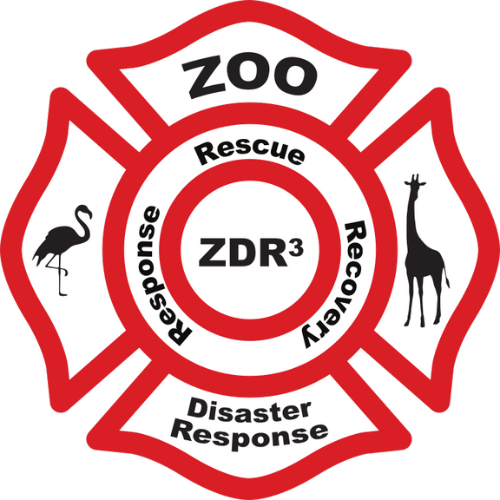
Cooperative Agreements
Grants &
How Grants Support ZDR3’s Mission
ZDR3 is a 501(c)(3) nonprofit organization. It is funded by voluntary contributions from Network facility members, corporate sponsors, grants, in-kind contributions, government grants, and gifts from private donors. We do not prioritize response to donor facilities, nor do we charge facilities for response. Most of the cost of responding to a zoological facility that has been impacted by a weather-related or human-caused adverse event is borne by ZDR3 and any institutions that volunteer their response teams.
ZDR3 Network facilities do not have to pay to become members or to receive response support. We want to be sure every zoological organization that wants to join is able to—no matter their size or budget.
Grants help support critical ZDR3 operations that allow us to maintain year-round disaster response readiness, including:
managing the ZDR3 Response Network
planning and preparing for disaster response, and documenting response activities
workshops, webinars, and online material to develop responder capacity and facility preparedness
participating in disaster response
coordinating with government and NGO agencies (including FEMA, DHS, USDA, NASAAEP, and others)
To contact ZDR3 regarding a grant, please email admin@ZDR3.org and include “Grant” in the subject line.
ZDR3 Network Overview
ZDR3 is the largest zoological disaster response organization in the United States.
Although there are several excellent nonprofit and governmental disaster response organizations for domestic animals, they are often not equipped to safely manage the unique needs of non-domesticated collections.
An industry-led effort, ZDR3, through its volunteer network facilities, provides support to zoos, aquariums, sanctuaries, and other non-domestic animal businesses before, during, and after significant incidents.
ZDR3 responds to network member facilities that have signed memorandums of understanding, upon request, independent of affiliation.
The ZDR3 Response Network currently includes more than 160 member facilities in 33 states and U.S. territories (as of 12/2023). ZDR3 continues to expand its network to strengthen and coordinate this tradition of inner-industry support. We do the upfront work that allows a network of industry peers to provide rapid, safe, knowledgeable, and viable incident response.
ZDR3 also collaborates with a wide range of entities in relevant sectors (government, nonprofit, and private) and continuously expands these connections to enhance response capacity.
What ZDR3 Accomplishes
As natural disasters and abnormal weather events continue to intensify and increase in frequency, ZDR3 manages and coordinates an emergency response network that fills a unique need in the animal industry. The ZDR3 Response Network includes teams that can meet a range of needs, including:
establishing Central Communications Command during disasters
clearing downed trees and other debris
assisting in facility repairs
assisting with animal care
evacuating animals and placing animals
documenting response activities
providing after-action reports
Learn about past responses.
Experienced Leadership
ZDR3 is the largest formalized network capable of completely organizing zoological disaster responses, including documentation and after action reports. The ZDR3 Executive Director and Board of Directors all have extensive experience working with non-domestic animals; each is also experienced in responding to disasters at zoological facilities.
Here is what we have learned during our own response, rescue, and recovery activities at facilities we have been asked to help after a disaster:
Uncoordinated responses lead to waste of personnel and resources.
Building and coordinating effective responses to natural and man-made hazards requires specialized resources for incident planning and disaster mitigation.
Facilities that have experienced a significant disaster are often overwhelmed by their immediate, extraordinary needs.
Peer facilities are willing and eager to help.
Peer-to-peer aid is often coordinated informally and without specialized prior planning.
Incidents of greater magnitude—which are becoming more common—require large-scale coordination among several facilities providing teams with a range of expertise.
An ideal response network includes a large group of facilities that are prepared to respond safely and effectively to a call for help.







